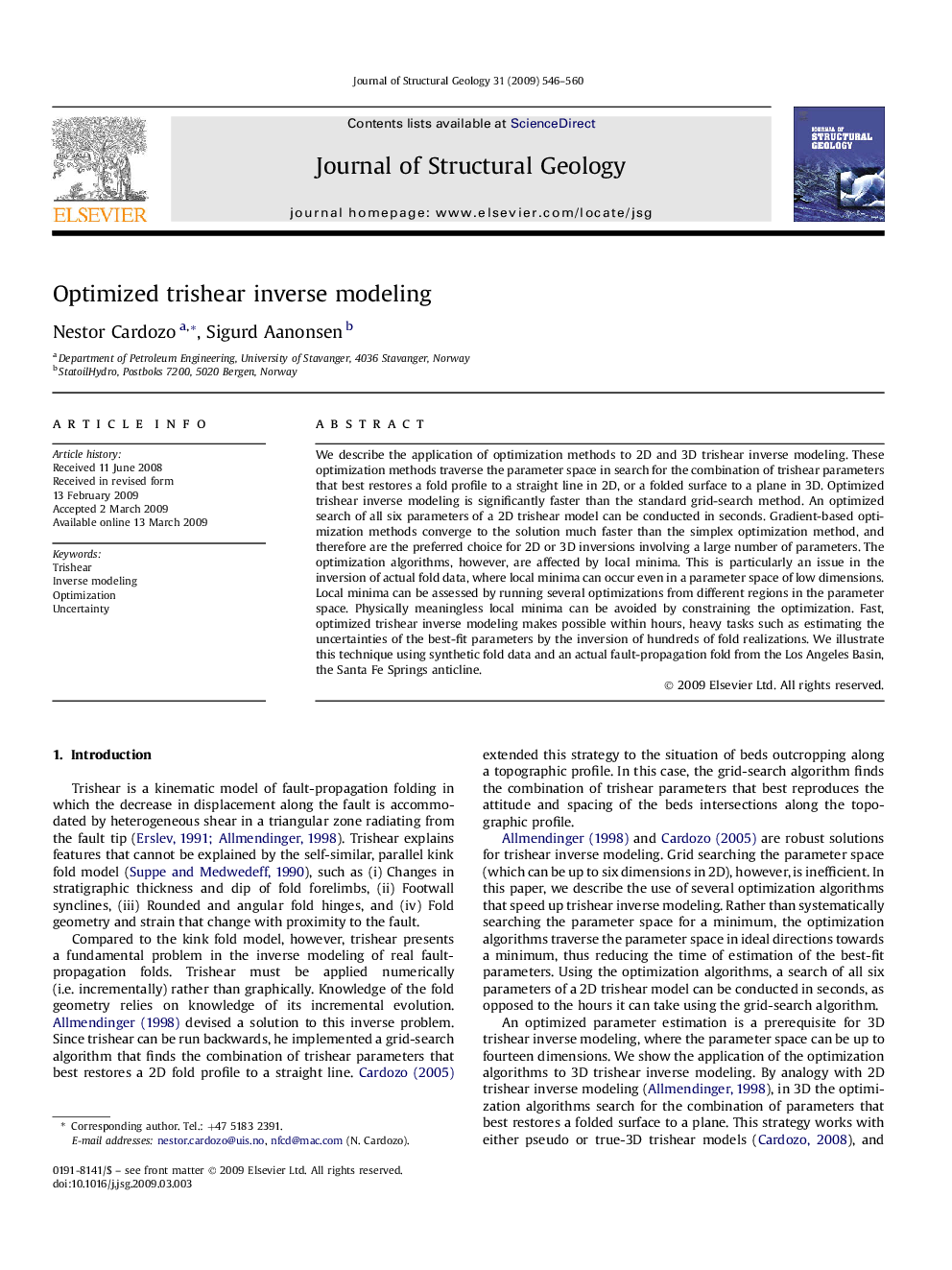| Article ID | Journal | Published Year | Pages | File Type |
|---|---|---|---|---|
| 4733763 | Journal of Structural Geology | 2009 | 15 Pages |
Abstract
We describe the application of optimization methods to 2D and 3D trishear inverse modeling. These optimization methods traverse the parameter space in search for the combination of trishear parameters that best restores a fold profile to a straight line in 2D, or a folded surface to a plane in 3D. Optimized trishear inverse modeling is significantly faster than the standard grid-search method. An optimized search of all six parameters of a 2D trishear model can be conducted in seconds. Gradient-based optimization methods converge to the solution much faster than the simplex optimization method, and therefore are the preferred choice for 2D or 3D inversions involving a large number of parameters. The optimization algorithms, however, are affected by local minima. This is particularly an issue in the inversion of actual fold data, where local minima can occur even in a parameter space of low dimensions. Local minima can be assessed by running several optimizations from different regions in the parameter space. Physically meaningless local minima can be avoided by constraining the optimization. Fast, optimized trishear inverse modeling makes possible within hours, heavy tasks such as estimating the uncertainties of the best-fit parameters by the inversion of hundreds of fold realizations. We illustrate this technique using synthetic fold data and an actual fault-propagation fold from the Los Angeles Basin, the Santa Fe Springs anticline.
Related Topics
Physical Sciences and Engineering
Earth and Planetary Sciences
Geology
Authors
Nestor Cardozo, Sigurd Aanonsen,
